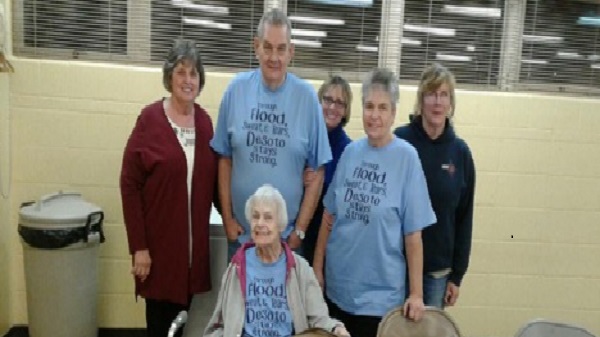By Anne Johnson
After repeated floods, some communities are ready to pack up and move to higher ground. What does it take to make that happen?
Despite some uncertainty, in many places climate predictions are pretty clear on one thing: the floods are probably going to get worse, not better.
There are many ways to manage the water and the risk. But when those measures are too expensive, impractical or undesirable, some communities look to another option: managed retreat.
Managed retreat is a process of relocating human infrastructure out of the water’s reach. In other words, moving to higher ground.
For many, a house represents not just a place to live but a community, a history and an entire life’s savings. How do you decide to leave all that behind? And, how do you make it financially feasible to do so?
Those are the tough questions at the heart of a series of community partnerships being facilitated by the non-profit Anthropocene Alliance (Aa) through their Higher Ground initiative with support from Thriving Earth Exchange and AGU’s Centennial Grants program. Higher Ground is the largest flood survivor network in the U.S., representing 50 flood survivor leaders in 22 U.S. states.
“Many people are victims of unmanaged retreat, being forced out of their homes,” explains Higher Ground Co-Founder Harriet Festing. “At the same time, there are people who want to get out and aren’t able to. In discussions with FEMA, we’ve learned that there are funds available to help communities do this. The problem is connecting the funds to homeowners that need it.”
Broaching the topic
A few years ago, Higher Ground partnered with Thriving Earth Exchange to match flood-affected community groups with scientists who could help them uncover the root causes of repeated flooding and explore options to prevent it. Starting in January 2019, Higher Ground worked with eight flood leaders in coastal areas to survey residents about their thoughts on managed retreat.
The idea behind the survey was simply to start a conversation and understand the factors flood victims might weigh when deciding on a course of action. They received 80 responses, and the opinions were wide-ranging. Respondents expressed concern about future flooding and associated threats to their property, safety, finances, and community. Overall, they expressed support for measures such as improving drainage, protecting green spaces and expanding wetlands, and reducing carbon emissions to slow global warming.
Feelings were more mixed on buyouts and community relocation. While most respondents either supported the idea or wanted to learn more, some expressed misgivings. Could this just be a way to trick people into going along with gentrification—making things worse for disenfranchised groups while benefiting wealthy people? Generally speaking, respondents wanted assurance that they’d get a fair price for their property and that their new location would offer the same, or better, standard of living as their current neighborhood.
Working together
Residents may be more successful in getting a buyout if they work together as a group, rather than as individuals. But that requires gaining consensus among homeowners who may have vastly different circumstances, motivations, and capabilities. “Sometimes just a few homeowners need to get out and others can wait. It’s just really difficult for people, and really personal,” says Festing.
If a community does get a critical mass of people interested in pursuing buyouts together, what should they do? According to Festing, they’ll be a lot better off if they can get educated on the process and take charge, rather than waiting for cities and states to figure it out for them. That’s where initiatives like Higher Ground and Thriving Earth Exchange can help.
“Residents need to be in control of the decision, but it’s hard because cities can’t really just pass control over to residents,” says Festing. “Resident-led organizations like ours can pull residents together and decide the negotiating terms. That process needs to be informed by the science and the options.”
With information comes empowerment
After conducting their survey, Higher Ground received an AGU Centennial Grant to continue discussions around managed retreat with eight interested communities. About half decided they were ready to move forward with pursuing buyouts; communities in De Soto, Mo.; Port Arthur, Texas; Lemmon Valley, Nev.; and Horry County, S.C. are now focused on the nuts and bolts of how to make it happen.
To support this new phase, Higher Ground and Thriving Earth Exchange are again teaming up to link the communities with a scientist, this time someone focused specifically on gathering data relevant to supporting a buyout petition. With help from flood modeling specialist Michelle Hummel, the teams are working to survey residents in particular neighborhoods, amass the data to make their case, navigate bureaucracy, and tap into available FEMA funds.
While the process can be daunting and often emotional, Festing is optimistic that communities can learn from each others’ successes. They draw their inspiration from a group of residents in Staten Island who were able to make it through the entire process and receive buyouts in less than 12 months. Higher Ground is seeking to mimic that process to move residents’ own plans forward—from navigating tough conversations to navigating tough bureaucracy—and, hopefully, find a safer home on the other end.
(Explore more Thriving Earth Exchange projects related to flooding.)

